- Home
- About Us
- Contact Us
- Site Map
- Affiliate Disclosure
- Privacy Policy
- Terms And Conditions
- Best Drone For Beginners 2021 : Top Beginner Drones
- Best Drones 2022 For Beginners : Top Beginner Drone
- Best Drones For Under 100 Dollars That Are Top Easy To Fly
- Best Cheap Drone For Photography : Camera Drones Budget
- What Is The Best Drone For 2022 And How Fast They Go
- Best Drone In The World To Use For Your First Time
- Best Drones 2022 With Camera : Which One Is The Best Drone
- Mavic Drone : The Most Marvelous Epic Controlled Flight System
- Drone Pilot License : The Best Way To Show Off Your Flight Skill
- Sky Rider Drone: Wi-fi Quadcopter With Foldable Black Camera
- Drone For Kids : The Best Toy To Focus On STEM Technology
- Propel Drone HD Camera Quadcopter And Star Wars
- Mini Drone With Camera : What Is The Best One And Why It Is Good
- Drones Dji : The Most Popular Consumer Drone On The Market Today
- Long Range Drone : How Far Can It Go And At What Rate Of Speed
- Micro Drone : The Smallest Toy With The Biggest Flight Fun
- Flying Spinner Mini Drone : The Best Flying Machine For Home Use
- Drones That Follow You : Is This An Invasion of Privacy or Not ?
- Drone Vivitar : A Magnificent Piece Of Equipment To Learn To Fly
- Drone Repair Near Me : Where Can I Find Reliable Parts And Stuff
- Drone Photography Near Me That Can Capture The Scenic View
- Drone Quadcopter : The Best Aerial Fly Machine That You Can Own
- Drone Light Show : A Spectacular Array Of Lights, Camera, Action
- Drone Holy Stone : The Most Quality Flying Device Anyone Can Use
- Sky Quad Drone Reviews Is It A Scam Or Legit Revealed
- Drone Fishing : When A Man Has A Rod, Boat, And Nothing But Time
- Faa Drone Registration : Feel Free To Fly But Follow The Rules
- Remote Control Drone : RC Drones With Fpv Controllers
- Hand Controlled Drone : Guiding Your Flight At Your Finger Tips
- Best Video Drones For Beginners | Features A Beginner Drone
- The Best Drone To Buy : Drones 2023 For Beginners
- Dgi Drone
- Best Drone For Night Photography
- Best Drone For The Money
- Best Drone For Teenager
- Best Drone For Under 200
- Best Drone For Under 500
- Best Drone For Video
- Best Drone In The Market
- Best Drone Under 1000
- Best Drones For Travel
- Bird Drone
- Black Hornet Drone
- Deerc Drone
- DJI Drones For Sale
- Best Beginner Drone With Camera : Are You New To Flying
- Best Beginner Drone For Me And How Much Will It Cost
- Battery For A Drone : Benefits, Advantages, And Features
- Best Camera Drone For Professional And Entertainment Purposes
- Best Cheap Drone In The Market That Will Not Cost An Arm and Leg
- Dji Fpv Drone
- Dji Mavic 3 Drone
- Drone Dj
- Best Drone Camera For First Time Users And Experienced Users
- What Are The Best Drones For Video Drone Camera
X31 Shockwave Drone : Sky Quadcopter Rider X-31 With Wifi And Headless Mode
It's possible that this drone model was released or announced after my training data, or it may be a fictional or concept drone.
If it is a real product, I recommend checking the manufacturer's website, product listings, or reliable online sources for detailed information about its features, specifications, and capabilities. Additionally, you could try reaching out to drone enthusiasts or communities who may have more up-to-date information on this particular model.
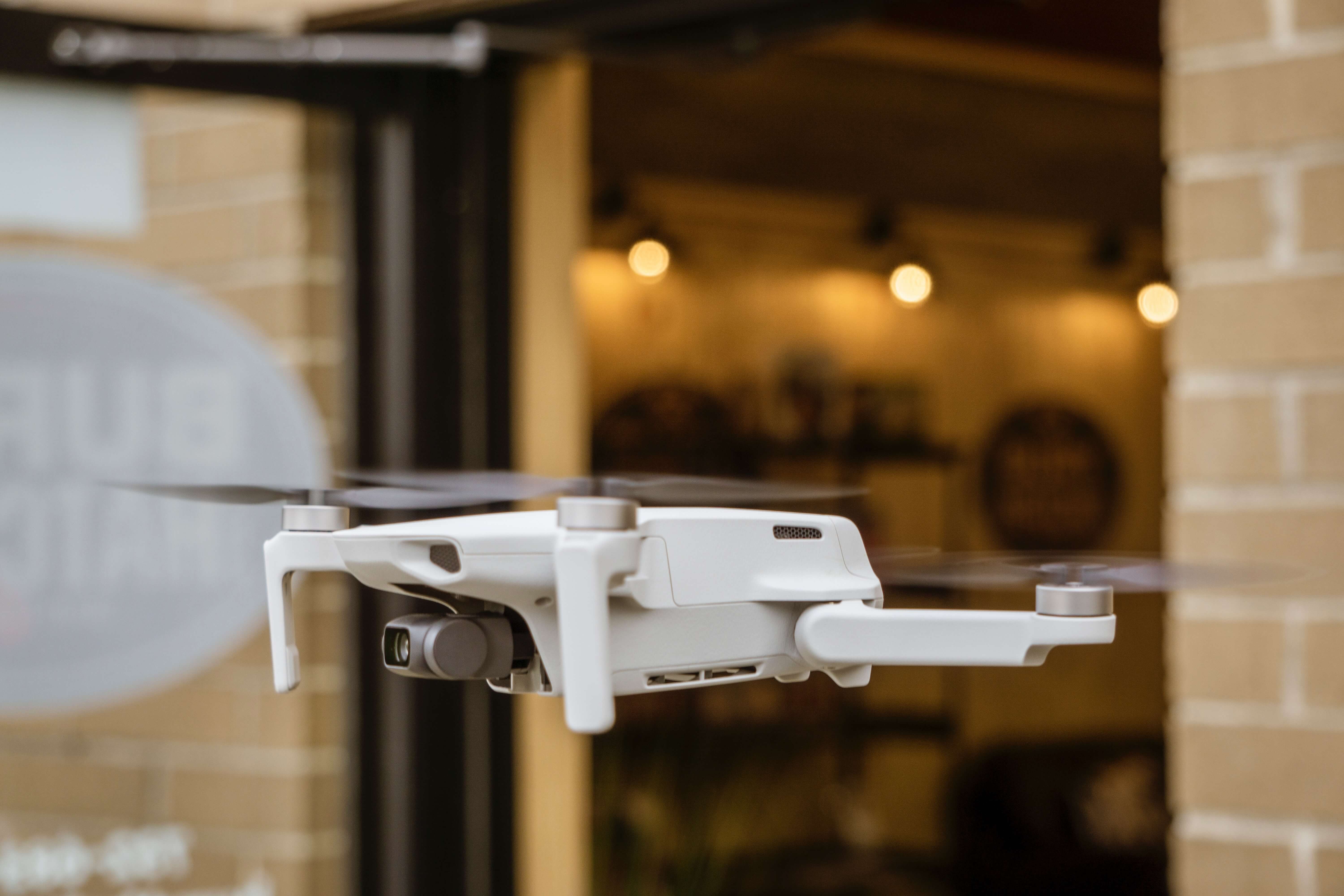
How Do I Connect My Drone To My Phone ?
To provide you with instructions on how to connect your to your phone, I'll assume a standard setup process. Please note that these instructions are hypothetical, as it does not exist as of my knowledge cutoff in September 2021. The following steps outline a general process for connecting a drone to a phone:
1. Power on the Drone: Ensure that the drone's battery is properly charged and turned on. Most drones have a power button or switch that you can use to activate it.
2. Enable Wi-Fi on your Phone: Go to your phone's settings and turn on the Wi-Fi feature. Make sure your phone's Wi-Fi is set to discover and connect to new devices.
3. Locate Drone Wi-Fi Network: On the drone, there should be a Wi-Fi network that you can connect to. The network name (SSID) may be specified in the drone's user manual or on its packaging. Look for the drone's network in the available Wi-Fi networks list on your phone.
4. Connect to the Drone's Wi-Fi Network: Tap on the drone's network name in the Wi-Fi networks list on your phone. If prompted, enter the password provided with the drone to establish the connection. The password is usually mentioned in the drone's manual or labeled on the drone itself.
5. Launch the Drone App: Download and install the dedicated drone app from the app store. The app name or the manufacturer's name may be specified in the drone's user manual or packaging.
6. Open the App and Connect: Launch the drone app on your phone. It should have an interface that allows you to connect to the drone. Look for an option to connect or pair the drone.
7. Select the Drone: In the app, locate the option to connect to the drone. It may appear as a button or a menu item. Tap on it and wait for the app to establish a connection with the drone.
8. Verify Connection: Once the connection is established, you should see a live video feed from the drone's camera on your phone's screen. You may also have access to various controls and settings within the app to operate the drone.
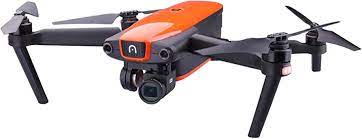
Please keep in mind that the actual process may vary depending on the specific drone model and accompanying app. If you have a drone or any other drone, it's best to refer to the manufacturer's instructions or contact their customer support for detailed and accurate information on how to connect it to your phone.
What Is The Top Speed Of A Drone ?
The top speed of a drone can vary significantly depending on several factors, including the drone's design, purpose, and size. Here are some general guidelines regarding drone speeds:
1. Consumer Drones: Consumer-grade drones, typically used for recreational purposes or aerial photography, generally have top speeds ranging from 25 to 50 miles per hour (40 to 80 kilometers per hour). These drones prioritize stability, maneuverability, and ease of use over raw speed.
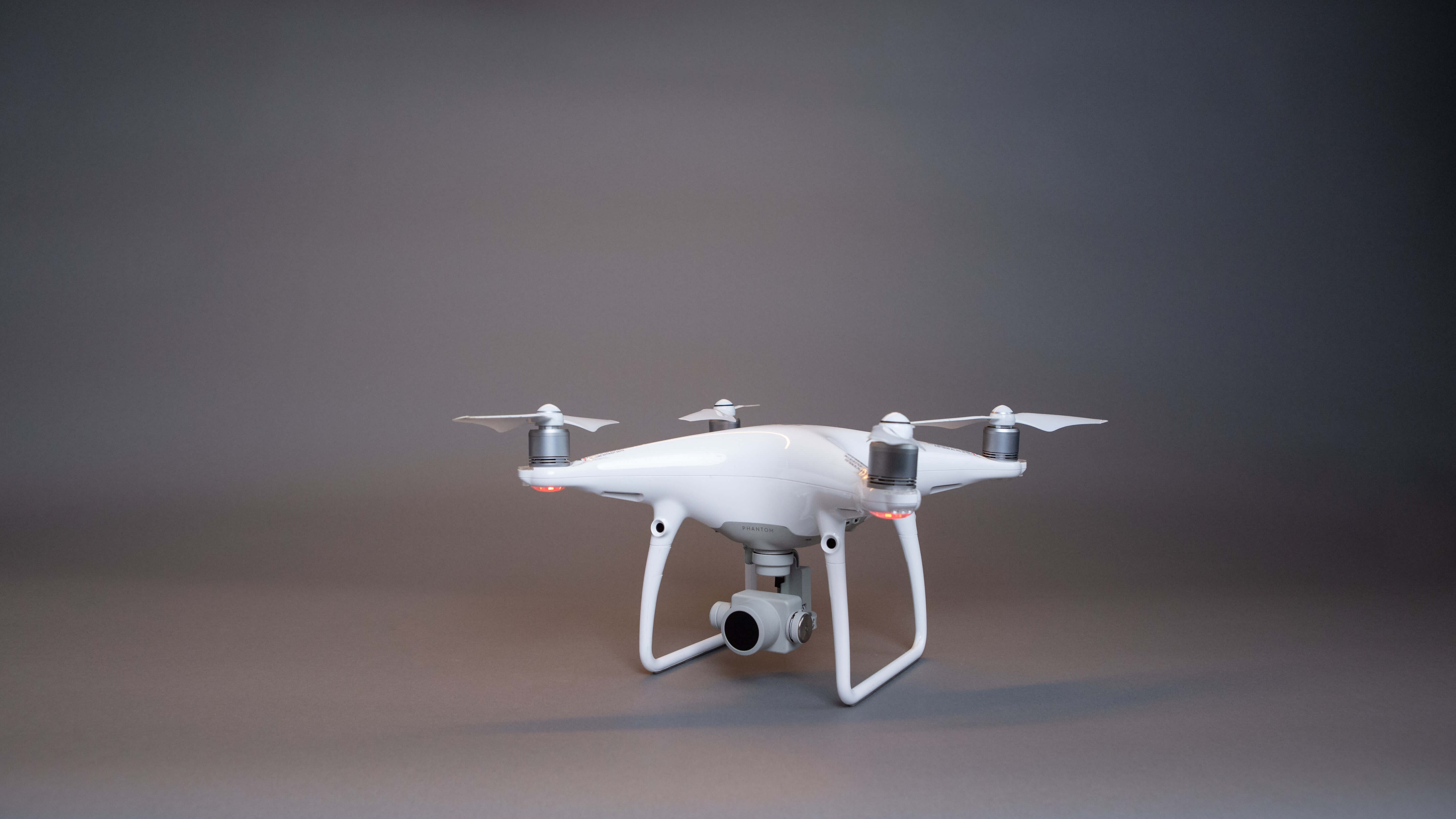
2. Racing Drones: Racing drones are built for high-speed competition and agility. They are designed to achieve faster speeds than consumer drones. Racing drones can reach speeds of up to 80 miles per hour (130 kilometers per hour) or even higher, depending on the specific model and modifications made by enthusiasts.
3. Professional Drones: Professional-grade drones used for commercial purposes such as aerial surveying, cinematography, or industrial inspections tend to have a broader range of speeds. Some professional drones can achieve speeds of around 40 to 60 miles per hour (65 to 95 kilometers per hour), while others may prioritize stability and payload capacity over speed.

4. Military and Experimental Drones: Military and experimental drones can have significantly higher speeds than consumer-grade or professional drones. Some military drones, such as the Predator or Reaper drones, are capable of speeds exceeding 200 miles per hour (320 kilometers per hour) for surveillance or combat purposes.
It's important to note that these speed ranges are general estimates and can vary depending on the specific model, flight conditions, payload weight, and other factors. Manufacturers usually provide information about the maximum speed of their drone models, so consulting the specifications of a particular drone will give you a more accurate idea of its top speed.
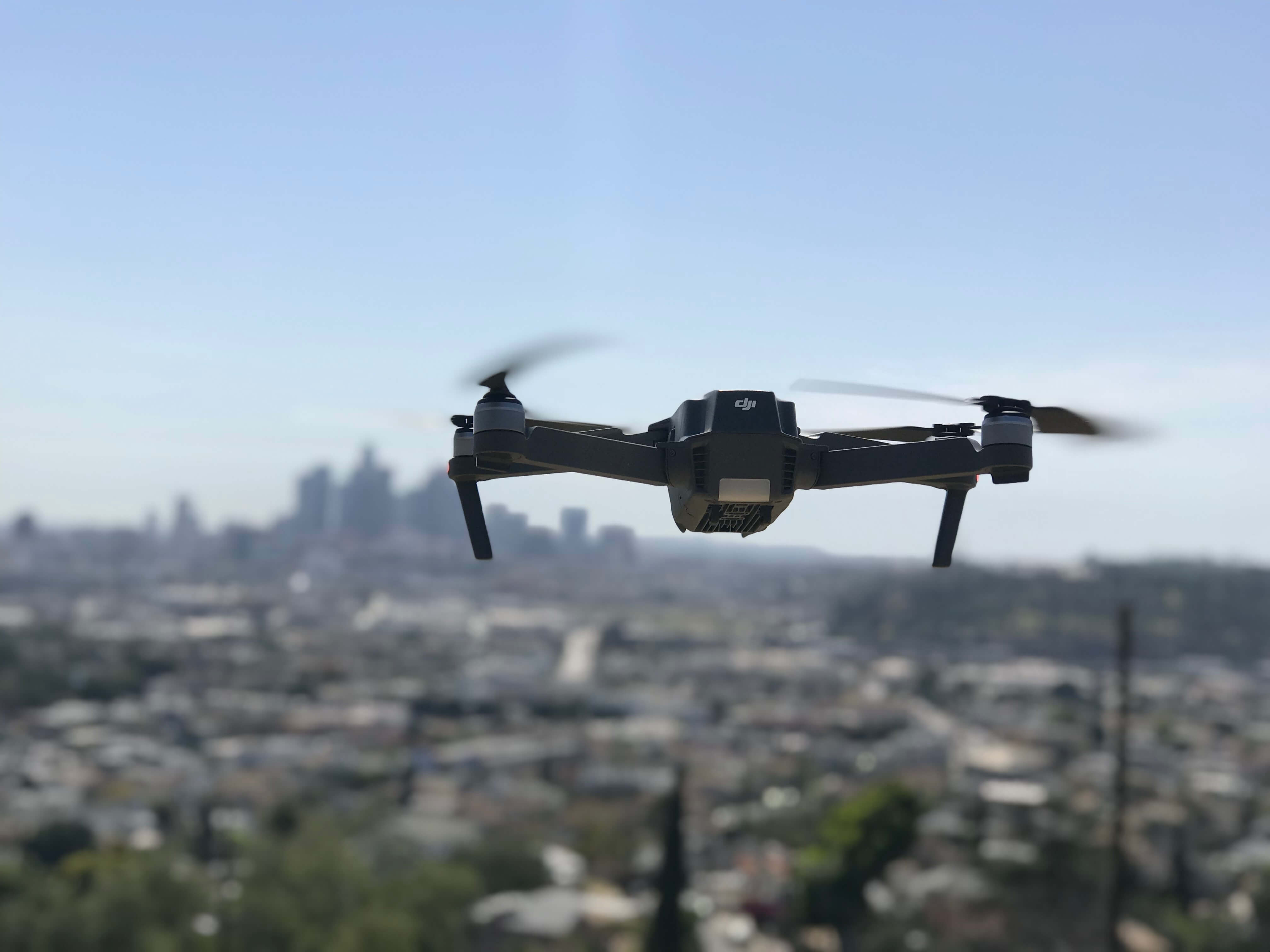
What Are Drones Used For Today ?
Drones, also known as unmanned aerial vehicles (UAVs), have gained widespread popularity and are utilized in various fields for a wide range of applications. Here are some common uses of drones today:
1. Aerial Photography and Videography: Drones equipped with high-quality cameras are extensively used for capturing stunning aerial photographs and videos. They provide a unique perspective and are employed in filmmaking, real estate, tourism, event coverage, and more.
2. Recreational and Racing Purposes: Drones have become popular among hobbyists and enthusiasts who fly them for recreational purposes. Drone racing has emerged as a competitive sport, where pilots navigate small, agile drones through obstacle courses at high speeds.

3. Industrial Inspections: Drones enable efficient and safe inspections of infrastructure such as power lines, pipelines, bridges, and tall structures. They can access hard-to-reach areas, reducing the need for manual inspections, and improving safety and cost-effectiveness.
4. Agricultural Monitoring: Drones equipped with various sensors and imaging technologies help farmers monitor crop health, irrigation needs, and pest infestations. They provide valuable data for precision agriculture, optimizing crop yield and reducing resource usage.

5. Search and Rescue Operations: Drones equipped with thermal cameras and other sensors aid in search and rescue missions, especially in challenging terrains or during natural disasters. They can cover large areas quickly, locate missing individuals, and transmit live video feeds to rescue teams.
6. Environmental Monitoring: Drones assist in environmental conservation efforts by monitoring wildlife, tracking animal populations, surveying forest areas, and detecting illegal activities such as poaching or deforestation. They provide valuable data for research and conservation planning.

7. Delivery and Logistics: Companies are exploring the use of drones for last-mile delivery of packages and goods, particularly in remote or hard-to-access areas. Drones can potentially reduce delivery times and costs, although regulatory and logistical challenges remain.
8. Mapping and Surveying: Drones equipped with specialized sensors and cameras are employed for land surveying, cartography, and creating high-resolution maps. They offer fast and accurate data collection for urban planning, construction projects, and land management.

9. Disaster Response and Humanitarian Aid: Drones play a vital role in disaster response by rapidly assessing damage, identifying hazards, and supporting rescue and relief efforts. They assist in assessing infrastructure integrity, locating survivors, and delivering critical supplies.
10. Scientific Research: Drones are used in various scientific fields, including atmospheric research, wildlife monitoring, geological surveys, and ecological studies. They provide researchers with new perspectives and data collection capabilities.

These are just a few examples of the many applications of drones in today's world. As technology advances and regulations evolve, the range of drone applications continues to expand, offering innovative solutions across multiple industries.
How Can I Watch My Drone Camera On My Phone ?
To watch your drone camera feed on your phone, you will typically need a drone that has a built-in camera, as well as a dedicated mobile app provided by the drone manufacturer. Here's a step-by-step guide on how to watch your drone camera on your phone:

1. Download the Drone App: Visit the app store on your phone (e.g., Google Play Store for Android or Apple App Store for iOS) and search for the official app provided by the drone manufacturer. Download and install the app on your phone.
2. Power on the Drone: Ensure that your drone is powered on and the camera is operational. Make sure the drone and your phone are within a reasonable range to establish a stable connection.
3. Connect your Phone to the Drone: Open the Wi-Fi settings on your phone and look for the Wi-Fi network name (SSID) of your drone. The network name is usually specified in the drone's manual or labeled on the drone itself. Connect your phone to the drone's Wi-Fi network.

4. Launch the Drone App: Open the app you downloaded in step 1. The app should have an interface that allows you to control and view the camera feed of your drone.
5. Establish Connection: In the app, look for an option to connect or pair the drone. This may involve selecting the drone's model or inputting a unique identification code. Follow the on-screen instructions provided by the app to establish a connection between your phone and the drone.

6. Camera View and Controls: Once the connection is established, you should see a live video feed from your drone's camera on your phone's screen within the app. You may also have access to various controls and settings within the app to operate the drone's camera, such as capturing photos or recording videos.
It's important to note that the exact steps may vary depending on the specific drone model and accompanying app. The drone's user manual should provide detailed instructions for connecting and viewing the camera feed on your phone. Additionally, make sure you follow any safety guidelines and regulations related to drone operation in your location.
Remember to always fly your drone in accordance with local laws and regulations, respecting privacy and safety guidelines.
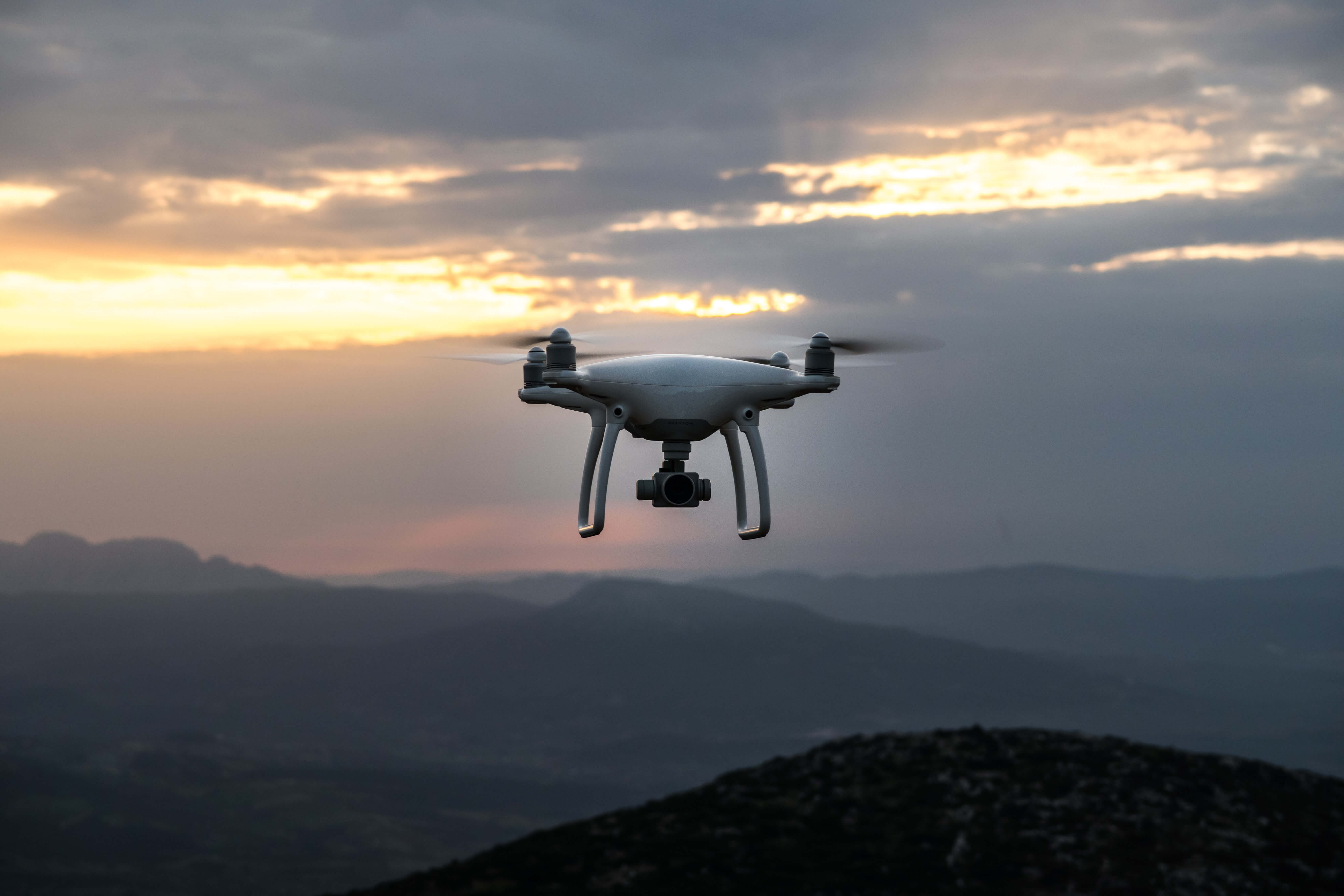
Is There A Universal Drone Controller App ?
The reason is that different drone manufacturers use their own proprietary software and hardware protocols, making it necessary for each drone to have its dedicated app or controller.
However, there are some third-party drone apps available that support multiple drone models from different manufacturers.
These apps aim to provide a centralized interface for controlling various drones, offering features such as flight planning, camera control, and live video streaming. Some examples of third-party drone controller apps that support multiple drone models include:
1. DJI GO: DJI, one of the leading drone manufacturers, offers the DJI GO app that supports a range of their drone models. It provides features like flight control, camera settings, and video streaming for DJI drones.

2. Litchi: Litchi is a popular third-party app that supports a variety of DJI drones. It offers advanced flight modes, waypoint navigation, and camera controls, among other features.
3. Autel Explorer: Autel Robotics provides the Autel Explorer app that is compatible with their drone models. It offers flight control, camera settings, and video streaming capabilities.

4. FreeFlight Pro: Parrot's FreeFlight Pro app supports various Parrot drone models. It allows users to control the drone's flight, adjust camera settings, and view the live video feed.
It's important to note that while these apps support multiple drone models, they are typically limited to specific brands or models within a brand. They may not be compatible with drones from different manufacturers. Additionally, compatibility may depend on the specific drone model and firmware version.
When using third-party apps, ensure that your drone is listed as supported and that the app is compatible with your specific drone model. Always follow the instructions provided by the drone manufacturer and exercise caution while flying your drone.
What Happens If You Fly A Drone Over 400 Feet ?
I can provide information on the general regulations and safety guidelines related to drone flight. However, it's important to note that drone regulations can vary between countries and regions, and specific rules may apply depending on the jurisdiction you're in.
Therefore, it's crucial to consult the regulations and guidelines specific to your location and seek advice from local aviation authorities or experts for accurate information.
In many countries, including the United States, the Federal Aviation Administration (FAA) sets guidelines for drone flight. In the U.S., for instance, the FAA has established a maximum altitude limit of 400 feet (121 meters) above ground level for most recreational and non-recreational drone operations. Exceeding this altitude limit without proper authorization or special circumstances can result in legal and safety issues.
Flying a drone above the altitude limit of 400 feet can potentially have the following consequences:
1. Violation of Regulations: Flying a drone beyond the maximum altitude limit specified by aviation authorities may result in violation of aviation regulations, subjecting the drone pilot to potential fines or legal penalties.
2. Airspace Intrusion: Flying a drone at higher altitudes increases the risk of entering controlled airspace where manned aircraft, such as planes or helicopters, operate. This poses a safety hazard and can lead to accidents or mid-air collisions.
3. Interference with Aircraft Operations: Drones flown at higher altitudes can interfere with the operations of manned aircraft, potentially disrupting their communication systems or creating hazards for pilots.
4. Privacy Concerns: Flying a drone at high altitudes may increase privacy concerns, as it enables the capture of imagery or data that could infringe upon the privacy rights of individuals or property owners.
It's crucial to understand and abide by the regulations and guidelines in your area to ensure safe and responsible drone operation. Always consult local aviation authorities or drone-specific organizations for the most up-to-date information regarding altitude restrictions, flight permissions, and other relevant regulations applicable to your location.
Can A Drone Fly For 1 Hour ?
Yes, there are drones available that can fly for up to one hour or even longer, depending on various factors. Here are some factors that can contribute to extended flight times:
1. Battery Capacity: The primary factor influencing a drone's flight time is the capacity of its battery. Drones with larger batteries generally have longer flight durations. High-capacity batteries, such as those with lithium-polymer (LiPo) technology, can provide extended flight times.
2. Drone Size and Weight: Smaller, lightweight drones typically consume less power and can achieve longer flight times compared to larger, heavier drones. This is because smaller drones require less energy to generate lift and maintain flight.
3. Energy Efficiency: Drones designed with energy-efficient components, such as efficient motors, propellers, and flight control systems, can maximize the use of available power and achieve longer flight times.
4. Flight Conditions: Flight conditions, including wind speed and weather conditions, can impact a drone's flight time. Flying against strong headwinds or in turbulent weather conditions can significantly reduce a drone's flight duration.
5. Payload and Accessories: Adding extra payload, such as cameras, gimbals, or additional equipment, can increase the weight of the drone, which in turn reduces flight time. It's important to consider the added weight and power consumption of accessories when estimating flight time.
6. Flight Style and Speed: Flight maneuvers and speed can also affect flight time. Flying at higher speeds or performing aggressive maneuvers can consume more power and reduce the overall flight duration.
It's worth noting that while there are drones capable of flying for one hour or longer, these are typically more advanced and specialized models designed for specific applications such as professional cinematography, industrial inspections, or surveying. Consumer-grade drones often have shorter flight times, typically ranging from 10 to 30 minutes, though there are exceptions.
When considering flight time, it's essential to consult the specifications provided by the drone manufacturer, as they will provide accurate information on the expected flight duration based on the specific drone model and conditions.
What Is The Greatest Distance A Drone Can Fly ?
The maximum distance a drone can fly largely depends on several factors, including the drone's design, battery capacity, flight conditions, and regulatory limitations. Here are some key factors that can impact a drone's maximum flight distance:
1. Battery Capacity: The drone's battery capacity is a crucial factor in determining its flight distance. Drones with larger batteries can generally fly longer distances. However, it's important to note that battery life decreases as the drone carries out flight operations, so the maximum flight distance may be lower than the theoretical maximum based on battery capacity.
2. Drone Design and Efficiency: The design and efficiency of the drone's components, such as motors, propellers, and flight control systems, can influence its flight distance. Drones designed with energy-efficient components and optimized aerodynamics can achieve longer flight distances.
3. Regulatory Limitations: Different countries and regions have regulations in place that dictate the maximum allowable distance for drone flights. These regulations may limit the maximum flight range to maintain safety, ensure line-of-sight operation, or prevent drones from entering restricted areas.
4. Communication Range: The range of communication between the drone and the controller or ground station also affects the maximum flight distance. Most consumer drones operate using radio frequency (RF) communication, and the range can vary depending on the drone's transmitter power and external factors such as interference.
5. Flight Conditions: Environmental factors like wind speed, temperature, and altitude can impact a drone's flight performance and its ability to cover long distances. Strong headwinds or adverse weather conditions can significantly reduce flight distances.
6. Payload and Accessories: Adding extra payload or accessories to the drone, such as cameras or additional equipment, can increase its weight and affect flight distance due to increased power consumption.
It's important to consider these factors and consult the specifications provided by the drone manufacturer to determine the maximum flight distance for a specific drone model. Additionally, it's crucial to comply with local regulations, ensure a safe operating environment, and maintain visual line-of-sight control of the drone during flight.
What Are Disadvantages Of Drones ?
While drones offer numerous benefits and applications, they also come with some potential disadvantages. Here is a list of 20 reasons that can be considered disadvantages of drones:
1. Privacy Concerns: Drones equipped with cameras can raise privacy concerns as they have the potential to invade personal privacy or capture sensitive information.
2. Safety Risks: Improper use of drones can pose safety risks, including collisions with other aircraft, property damage, or injury to people.
3. Regulatory Restrictions: Drone operations are subject to regulations that can limit where, when, and how they can be flown, which can restrict their usability.
4. Limited Flight Time: Most consumer-grade drones have relatively short flight durations due to battery limitations, typically ranging from 10 to 30 minutes.
5. Battery Recharge Time: Recharging drone batteries can take a significant amount of time, which can limit the efficiency and continuous operation of drones.
6. Vulnerability to Weather: Drones can be affected by adverse weather conditions such as strong winds, rain, or extreme temperatures, limiting their usability and flight capabilities.
7. Limited Payload Capacity: Drones often have limited payload capacity, which can restrict their ability to carry heavier or larger equipment.
8. Noise Pollution: Drones can generate noise during operation, which can be a nuisance in residential areas or disturb wildlife.
9. Limited Range: Drones typically operate within a limited range, and their remote control signals may have limitations based on line-of-sight or radio signal strength.
10. Vulnerability to Hacking: Drones that are connected to networks or controlled wirelessly may be vulnerable to hacking, potentially leading to unauthorized control or data breaches.
11. Limited Sensing Capabilities: While drones can carry sensors, their sensing capabilities may be limited compared to manned aircraft or ground-based systems.
12. Skill and Training Requirements: Operating a drone effectively and safely requires skill and training, especially when it comes to advanced flight maneuvers or specific applications.
13. Maintenance and Repair: Drones, like any other technology, require maintenance and repair, which can be time-consuming and costly.
14. Risk of Theft or Loss: Drones are valuable and portable, making them susceptible to theft or loss if not properly secured or monitored.
15. Interference with Wildlife: The presence of drones can disturb or disrupt wildlife, especially in sensitive ecological areas.
16. Limited Use in Certain Environments: Some environments, such as densely populated urban areas or restricted airspace, may have limitations or prohibitions on drone use.
17. Public Perception and Misuse: Negative incidents involving drones, such as privacy breaches or unsafe operations, can contribute to public skepticism or negative perception of drones.
18. Limited Autonomy: While autonomous flight capabilities are improving, most consumer drones still require human control and supervision.
19. Cost: Drones can be expensive, especially advanced models or those equipped with specialized features or cameras.
20. Insurance and Liability: Operating drones commercially or in certain situations may require liability insurance coverage, adding to the cost and legal considerations.
It's worth noting that not all these disadvantages apply to every drone or every situation. Some disadvantages can be mitigated through responsible and safe drone operation, adherence to regulations, and public awareness and education.
What Are Potential Risks Of Drones ?
Drones, like any technology, come with potential risks. Here is a list of 20 potential risks associated with drones:
1. Collisions: Drones can collide with other drones, manned aircraft, or objects, leading to accidents, property damage, or injury.
2. Privacy Invasion: Drones equipped with cameras can infringe upon privacy rights if used inappropriately or without consent.
3. Safety Hazards: Mishandling or operating drones in unsafe ways can pose risks to people, animals, or property.
4. Airspace Intrusion: Unauthorized drone flights in restricted or controlled airspace can interfere with manned aircraft operations, leading to accidents or disruptions.
5. Data Breaches: Drones that capture and transmit data wirelessly can be vulnerable to hacking or unauthorized access, potentially leading to data breaches.
6. Radio Frequency Interference: Drones' wireless communication systems can interfere with other electronic devices or critical communication systems.
7. Accidental Flyaways: Technical malfunctions or operator errors can cause drones to fly away or become uncontrollable, potentially leading to loss or damage.
8. Cargo Drops: Drones carrying payloads or packages can accidentally drop them, causing property damage or injury.
9. Cyberattacks: Drones connected to networks or controlled via wireless communication can be targeted by cyberattacks, leading to control loss or data compromise.
10. Battery Fires: Lithium-ion batteries used in drones have the potential to overheat or catch fire if damaged or not properly handled.
11. Wildlife Disturbance: Drones flying near wildlife habitats or sensitive areas can disrupt animal behavior or cause stress to wildlife.
12. Power Line Interference: Flying drones near power lines or electrical infrastructure can pose a risk of electrocution or damage to the drone and infrastructure.
13. Unauthorized Surveillance: Drones equipped with cameras can be used for illegal surveillance or to gather sensitive information without proper authorization.
14. Public Perception: Negative incidents involving drones can lead to public fear, skepticism, or hostility toward drone technology.
15. Noise Pollution: Continuous or frequent drone operations in residential areas can contribute to noise pollution and disturb peace and quiet.
16. Flyover Hazards: Low-altitude drone flights near people or crowded areas can create a hazard if the drone malfunctions or loses control.
17. Propeller Accidents: Fast-spinning propellers can cause injury if operated in close proximity to people or animals.
18. Risk of Dropping Objects: Improperly secured payloads or objects attached to drones can detach and cause harm or property damage.
19. Weather Conditions: Adverse weather conditions such as strong winds, rain, or lightning can pose risks to drone flights and control.
20. Lack of Pilot Training: Insufficient training or lack of knowledge about drone operation can lead to errors or unsafe practices.
It's important to note that responsible drone operation, compliance with regulations, and proper training can mitigate many of these risks. Adhering to safety guidelines and maintaining awareness of the potential risks associated with drones is essential for safe and responsible drone use.
How Do You Detect A Drone Spying On You ?
Detecting a drone that may be spying on you can be challenging, as drones can be relatively small, quiet, and capable of flying at varying altitudes. However, here are 20 methods that can potentially help in detecting a drone:
1. Visual Observation: Regularly scan the sky and surroundings for any suspicious or unfamiliar drone activity.
2. Unusual Noise: Listen for the sound of buzzing or humming, which can indicate the presence of a nearby drone.
3. Unusual Lights: Look for blinking or unusual patterns of lights on a drone, especially during nighttime operations.
4. Radio Frequency (RF) Monitoring: Use RF scanning devices to detect signals that drones emit, such as video transmission or control signals.
5. Wi-Fi Network Detection: Monitor your Wi-Fi network for new or unknown devices that may be associated with a drone's control system.
6. Anti-Drone Systems: Employ specialized anti-drone systems that use radar, acoustic sensors, or cameras to detect and track drones.
7. Infrared Cameras: Use thermal or infrared cameras to detect the heat signature of a drone, which can help locate it even if it's not visually apparent.
8. Drone Detection Apps: Install smartphone apps that utilize crowdsourced data or RF scanning to detect nearby drones.
9. Acoustic Detection: Listen for the distinct sound signature of a drone, which may differ from ambient sounds.
10. Drone Detection Dogs: Train dogs specifically to recognize and respond to the presence of drones.
11. Drone Detection Radars: Use specialized radar systems designed to detect and track drones based on their radar signatures.
12. Drone Detection Birds: Trained birds of prey can be sensitive to the presence of drones and may exhibit certain behaviors when one is nearby.
13. Thermal Imaging: Use thermal imaging cameras to detect the heat emitted by a drone's motors or batteries.
14. Motion Detection Sensors: Install motion sensors in areas where a drone may attempt to enter or fly over.
15. Drone Detector Drones: Deploy dedicated drone detector drones that are equipped with sensors to locate and track other drones.
16. Visual Surveillance Cameras: Position security cameras strategically to cover areas where a drone may approach or fly over.
17. Drone Detection Services: Employ professional drone detection services that use specialized equipment and expertise to detect and identify drones.
18. Laser Detection: Laser-based systems can detect and track drones by reflecting lasers off the drone's body.
19. Radio Signal Direction Finding: Use specialized equipment to determine the direction from which drone control signals are originating.
20. Community Watch: Establish community watch programs to share information and collectively monitor for drone activity.
While these methods can aid in drone detection, it's important to note that some methods may require specialized equipment or expertise. Additionally, always adhere to local laws and regulations regarding drone detection, as certain counter-drone measures may be restricted or illegal in some jurisdictions.
For more information click here DJI Mavic